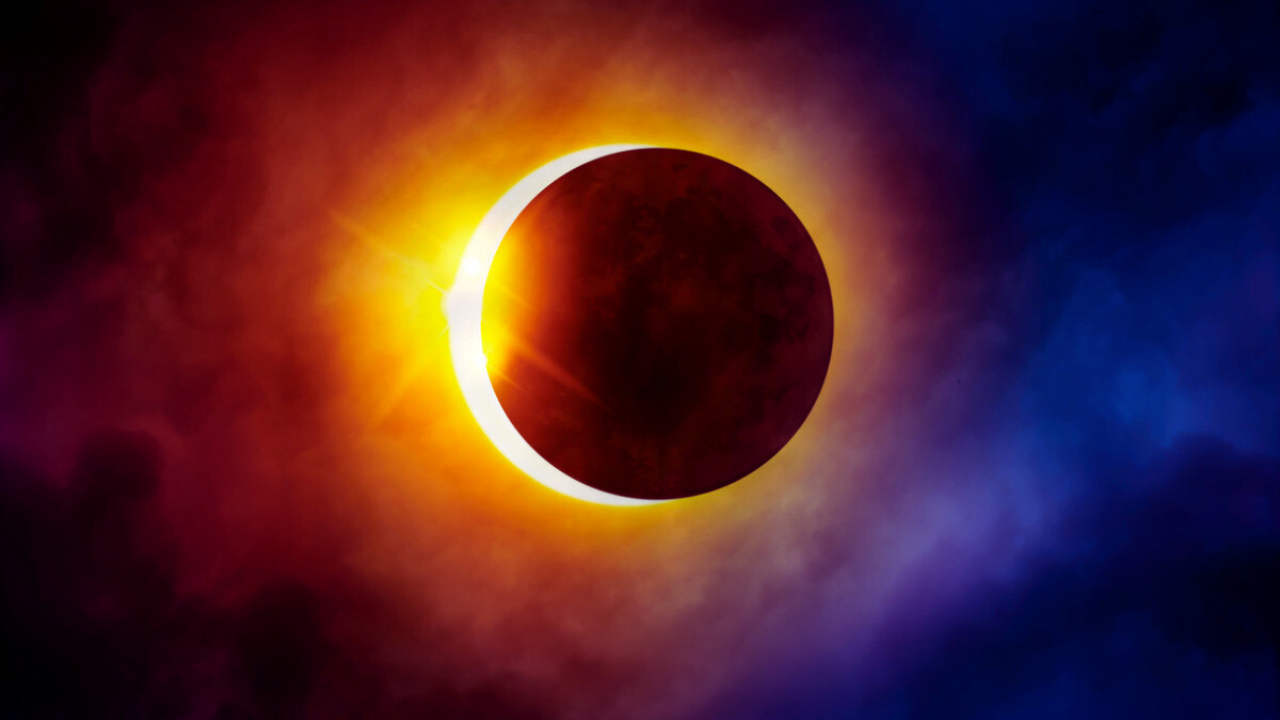Here are some dos and don’ts to observe while viewing the Chandra Grahan partial lunar eclipse this October as the Earth, moon, and sun align.
A partial lunar eclipse will occur on October 28 between 01:06 and 02:23 IST when the moon passes through the Earth’s shadow. Viewers in Asia, Russia, Africa, the Americas, Europe, Antarctica, and Oceania will be able to see the partial eclipse, which will be visible in the southwest sky from New Delhi, India, and anywhere else the moon is above the horizon. This October, we will see a partial lunar eclipse, which is an amazing phenomenon that happens when the moon partially passes through the Earth’s shadow, turning only a portion of it reddish-brown.
All you have to do to witness a partial lunar eclipse is step outside, gaze up, and take in the sight of the moon’s progressive transformation in hue. To ensure that you enjoy the partial lunar eclipse safely and without any danger or inconvenience, here are some dos and don’ts to help you fully appreciate the beauty of this celestial event:
To ensure you don’t miss it, confirm the partial lunar eclipse’s date and time in your area.
To get the finest visibility, locate a dark area away from light pollution and city lights.
Remember to dress warmly because the October chill is already in the air, especially if you intend to spend a lot of time outside.
Please remember to pack water and food so you can keep hydrated and comfortable.
Arrive at your viewing location well in advance to set up and make sure you don’t miss any of the eclipse’s phases.
To truly appreciate the experience, educate yourself on the various stages of a partial lunar eclipse.
Although lunar eclipses can be lengthy occurrences, plan ahead and spend some time outside to witness the full phenomena. Don’t wait until the last minute.
If you own a camera, you should think about capturing pictures to preserve the memory.
Avoid staring directly at the sun during solar and lunar eclipses as this might lead to eye injury if you don’t wear appropriate eye protection.
To protect your night vision and lessen light pollution, avoid using flashlights but, if you must, use a red flashlight or wrap a conventional flashlight in red cellophane.
Instead of using a lot of artificial light, try to use as little of it as possible because it will make it harder for you to observe the eclipse.
If you have access to them, make use of binoculars or a telescope to improve your viewing experience.
Although you should not depend on weather forecasts, you can check them to be ready in case clouds block your view.
Be patient and enjoy the process; sometimes the lunar eclipse takes some time to reach its most impressive phase.
For More: News
A Partial Lunar Eclipse: What Is It?
When the Earth moves in front of the Sun and the Full Moon, a partial lunar eclipse happens, however the precise alignment is not guaranteed. A partial lunar eclipse, according to Time and Date, happens when the Earth passes in front of the Sun and Moon but the three celestial bodies do not line up in a straight line. When that occurs, the umbra—the deepest, core region of the Earth’s shadow—covers a tiny portion of the Moon’s surface. The penumbra, or outside edge of the Earth’s shadow, covers the remaining portion of the Moon.
Chandra Grahan’s Lunar Eclipse: Time & Date
The final Lunar Eclipse of the year is scheduled for October 28, according to Space.com. This will start at 01:05 AM on October 29, 2023, and terminate at 02:24 AM. On the other hand, the sutak, or unfavourable time, leading up to the eclipse will be viewed from 02:50 PM to 02:24 AM.
Partially lunar eclipse on October 28 and 29, 2023 (6-7 Kartika, 1945 Saka Era). The Partial Lunar Eclipse will be visible from all of India at midnight. There will be a one hour and nineteen minute eclipse. The eclipse’s umbral phase will begin on October 29 at 01:05 IST and end at 02:24 IST, as stated in the Ministry of Science’s official release.
Where Can I See The 2023 Lunar Eclipse Live?
The year’s biggest astronomical event will be seen almost everywhere in the world. Time and Date indicate that over Europe, Asia, Australia, Africa, North America, North/East South America, the Pacific, Atlantic, Indian Ocean, Arctic, and Antarctica, at least some portion of the partial lunar eclipse should be visible.
Will Indians be able to see this lunar eclipse?
Yes, a lot of India will be able to see this lunar eclipse. Afghanistan, China, Iran, Turkey, Algeria, Bangladesh, Bhutan, Mongolia, Nigeria, Britain, Spain, Sweden, Malaysia, Philippines, Thailand, Australia, Japan, Indonesia, Korea, and eastern sections of Brazil would also be able to see it, in addition to India.
How Can I See a Lunar Eclipse?
Lunar eclipses can be safely observed, in contrast to solar eclipses. Without the need for extra equipment or eye protection, one can observe the unique alignment. Without a telescope or binoculars, all you have to do is walk outside and use your unaided eyes to look up at the sky.
The final celestial event of the year will be this lunar eclipse. The next lunar eclipse is scheduled on March 25, 2024. Since Earth’s penumbral shadow will cover 95.57% of the Moon, a penumbral lunar eclipse will be visible to the unaided eye.
